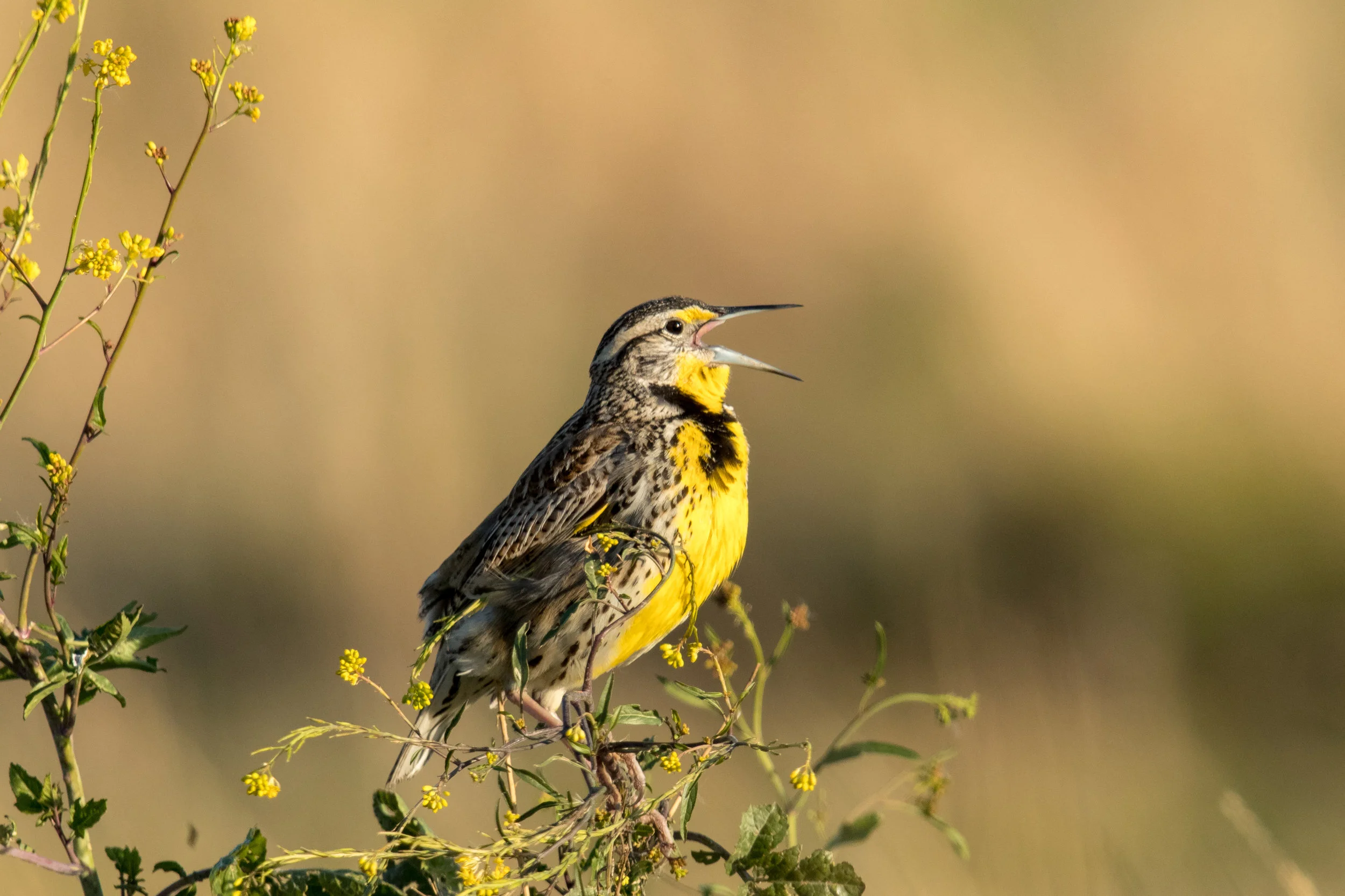The California Quail has as many as 13 different calls, but it does not have a song. Nevertheless, the bird’s Assembly Call is as familiar as a song.
American Pipit
Greater Sage-Grouse
Indigo Bunting
An Indigo Bunting, a common bird of the Eastern United States, made a rare visit to the west at Marymoor Park in Redmond, WA in June 2020.
The lovely all blue male Indigo Bunting has been called the Blue Canary (Dunne) for good reason. Its song is a bright and cheery combination of whistled notes, often in pairs, which can continue for hours throughout the day. This bunting loves to sing from a high and open perch.
Horned Lark
Western Meadowlark
The Western Meadowlark (WEME) is 9-1/2" long. The WEME has a yellow breast and belly with a black V-shaped breast band. Upper parts are dark brown with dusky edges. When the bird is flushed it shows a conspicuous patch of white on each side of a short tail and flies with several rapid wingbeats alternating with short glides.
Ring-necked Pheasant
Sage Thrasher
Northern Shrike
Like a sentinel, as described by its species name excubitor, Latin for watchman or guard, the Northern Shrike surveys its territory from a low perch on a shrub or post. With precision it hunts using a direct flight toward its prey-a small rodent or another bird-and dispatches it quickly by “pounding its bill into the base or back of the skull and the using its hooked bill severing the spinal cord between the neck vertebrae as falcons do” (Sibley).




















